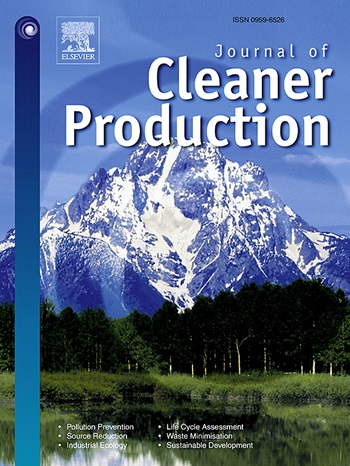UiO-66纳米颗粒修饰的BiOBr纳米板上纯苯他松、双氯芬酸和甲基橙污染物的原位可见光/紫外有效降解
IF 9.7
1区 环境科学与生态学
Q1 ENGINEERING, ENVIRONMENTAL
引用次数: 0
摘要
在这项研究中,通过原位超声自发沉淀法制备了预先合成的UiO-66纳米颗粒(0、5、7.5、10和15 wt.%)装饰的BiOBr纳米板,并在紫外和可见光下检测了纯和混合苯他松、双氯芬酸和甲基橙的去除效果。采用XRD、FESEM/EDX、N2吸附-解吸、FTIR、UV-Vis和PL等技术对样品进行了表征。UiO-66含量的变化使BiOBr纳米板的重叠减少了7.5 wt.%,改善了光学和表面特性。然而,进一步的修饰会减轻UiO-66的协同影响,因为BiOBr纳米板的表面覆盖和颗粒内相互作用较弱。表征结果表明,吸附量和光催化性能均呈增减趋势。因此,7.5 wt.%的UiO-66纳米颗粒可以有效去除苯他松、双氯芬酸和甲基橙,以及这三种有机污染物的各种组合,是用于BiOBr纳米板结构装饰的最佳含量。在紫外光照射下,最佳复合光催化剂(BU-7.5)对苯他松、双氯芬酸和甲基橙的去除率分别为80%、85%和100%。同样的污染物在可见光(LED灯)照射下的去除率分别为68%、71.5%和99.8%。此外,采用OFAT法评估光催化条件(包括光复合材料用量、污染物浓度和组成、溶液pH和光照时间)对光催化性能的影响。在最佳光催化条件下,可重复使用结果和后期表征证实了uio -66修饰的BiOBr光复合材料的持续性能和结构稳定性。最后,提出了反应机理。本文章由计算机程序翻译,如有差异,请以英文原文为准。
In situ visible/UV-light effective degradation of pure and mixed bentazon, diclofenac, and methyl-orange pollutants on BiOBr nanoplates UiO-66 nanoparticle-decorated, sonochemically
In this study, BiOBr nanoplates decorated with pre-synthesized UiO-66 nanoparticles (0, 5, 7.5, 10, and 15 wt.%) were prepared through in situ sonicated spontaneous precipitation and examined in the elimination of pure and mixed bentazon, diclofenac and methyl-orange under UV and visible light. The samples were characterized by XRD, FESEM/EDX, N2 adsorption-desorption, FTIR, UV-Vis and PL techniques. The variation of UiO-66 content reduced BiOBr nanoplate overlapping up to 7.5 wt.%, improving optical and surface characteristics. However, the further decoration alleviates the synergetic impact of UiO-66 because of the surface coverage of BiOBr nanoplates and weak intra-particles interaction. In accordance with characterization results, an increase-decrease trend was observed for adsorption capacity and photocatalytic performance of bentazon degradation. Accordingly, 7.5 wt.% seems to be the optimum content of UiO-66 nanoparticles for the structural decoration of BiOBr nanoplates which can effectively eliminate bentazon, diclofenac and methyl-orange, and various combinations of these three organic pollutants. Under UV light irradiation, the optimal composite photocatalyst (BU-7.5) eliminates 80% of bentazon, 85% of diclofenac, and 100% of methyl-orange, respectively. The same pollutants are eliminated under visible light irradiation (LED lamp) at 68%, 71.5%, and 99.8%, respectively. Moreover, the impact of photocatalysis conditions including photocomposite dosage, concentration and composition of contaminants, solution pH, and illumination time on the photocatalytic performance was assessed using one factor at a time (OFAT) approach. In optimum photocatalysis conditions, the reusability results and post-characterization confirm the sustained performance and structural stability of the UiO-66-decorated BiOBr photocomposite. Finally, a reaction mechanism was also proposed.
求助全文
通过发布文献求助,成功后即可免费获取论文全文。
去求助
来源期刊

Journal of Cleaner Production
环境科学-工程:环境
CiteScore
20.40
自引率
9.00%
发文量
4720
审稿时长
111 days
期刊介绍:
The Journal of Cleaner Production is an international, transdisciplinary journal that addresses and discusses theoretical and practical Cleaner Production, Environmental, and Sustainability issues. It aims to help societies become more sustainable by focusing on the concept of 'Cleaner Production', which aims at preventing waste production and increasing efficiencies in energy, water, resources, and human capital use. The journal serves as a platform for corporations, governments, education institutions, regions, and societies to engage in discussions and research related to Cleaner Production, environmental, and sustainability practices.
 求助内容:
求助内容: 应助结果提醒方式:
应助结果提醒方式:


